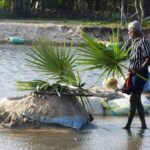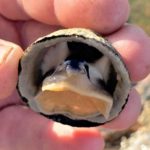Africanan blue swimming crabs (Portunus segnis) are speared by beachcombers in the lagoons of Zanzibar. These crabs, however, are not the prime target when spearing but only an opportunistic by-catch. The prime target when using spears for fishing is octopuses. There are no official records of how many of these crabs are caught, nor which gender, age, or weight they are. They are just speared artisanally and used as subsistence food by the families. Official statistics of Zanzibarian fisheries authorities and research papers only contain records of mud crabs (Scylla serrata) caught in mangrove growing areas and fattened on crab farms.
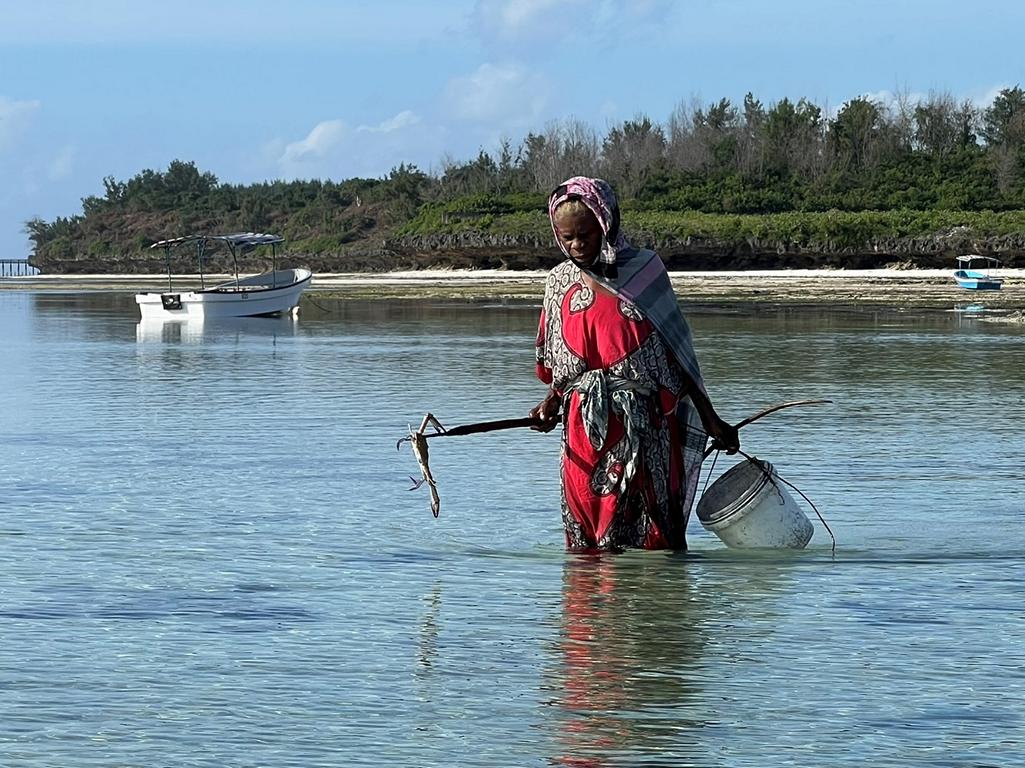
Which species is it?
At first sight, the speared swimming crabs at Michamvi, near Pingwe, seemed to be common Blue swimming crabs (Portunus pelagicus). Closer inspection, however, revealed that these were another species, called ‘African blue swimming crabs’ (Portunus segnis).
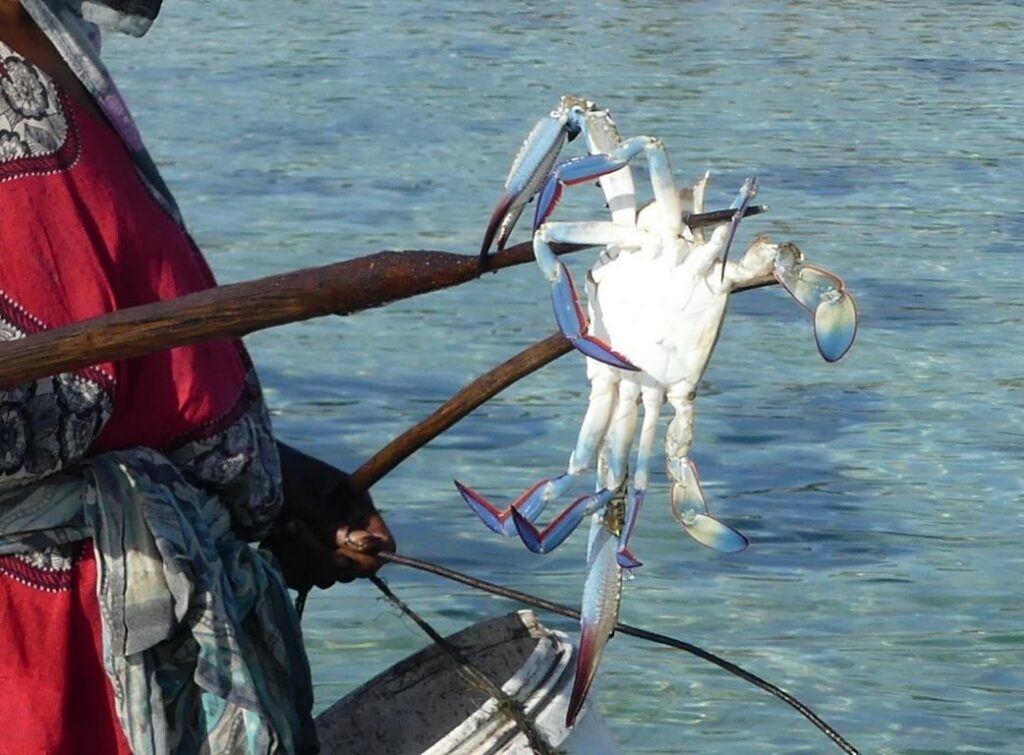
Both species differ because P. segnis males have a more reddish-brownish carapace marked with white spots, especially towards the rear and sides. P. pelagicus, on the other hand, has a more bluish-greenish carapax color and a considerably denser pattern of white spots, which leads to one of its common names, Flower crab. The merus (lower segments of the arms with pincers) are smaller spotted at P. segnis than at P. pelagicus. The females are similar to the males except that the tips of their legs are red with a brownish-red tinge.

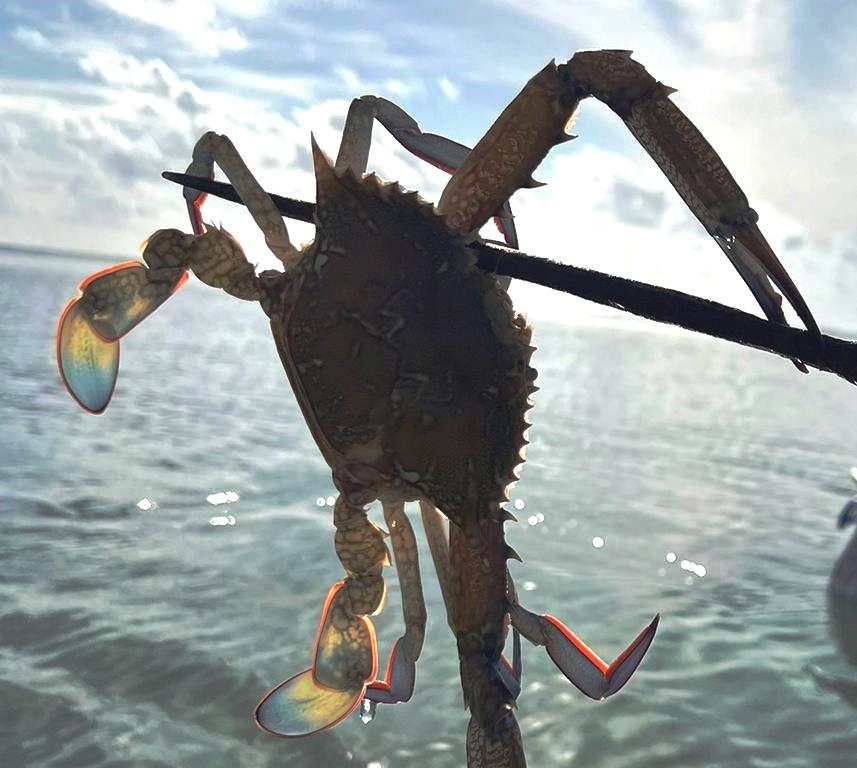
Therefore, the speared crab in the picture above is a female African blue swimming crab (Portunus segnis).
Distribution and habitat
The African blue swimming crab’s natural distribution area was originally the East African coastline to Mocambique, the Persian Gulf to Gujarat and northern Maharashtra, and the Red Sea. It invaded the Mediterranean Sea via the Suez Channel and now occurs from the easternmost Turkish coastline across to Tunesia and the southern shores of Sicily.

Portunus segnis prefers shallow coastal waters and estuaries with sandy or muddy bottoms. It needs seagrass beds, mangroves or rocks, and rockpools to hide. The lagoons of Zanzibar are, therefore, ideal habitats for these crabs. Its close relative (P. pelagicus) prefers deeper waters.
Spearing the crabs
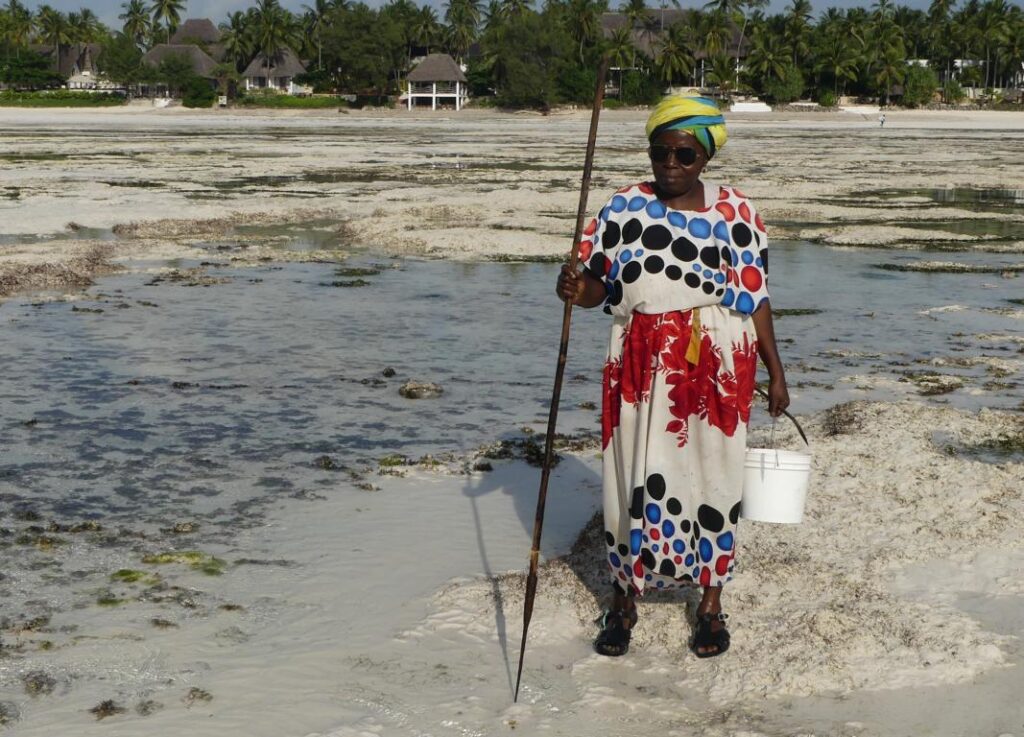
The spears used for beachcombing are about 2 m long. The wooden handle has an average diameter of about 32 mm or 1 ¼’’. It is tipped with a single iron spike to penetrate the targets deeply and pin them to the sea bottom. From this position, they can be manually handled.
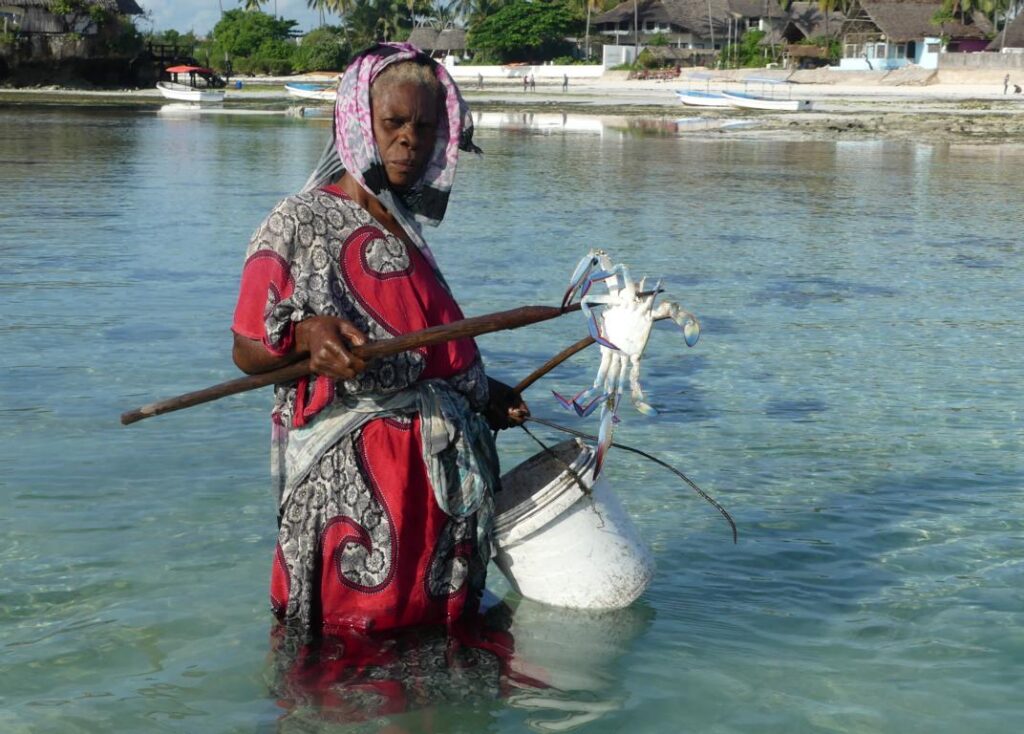
The beachcombers are wading at low tides through the waters and opportunistically spear crabs or octopuses in the open within reach of their weapon.
Lessons learned about spearing African blue swimming crabs:
- African blue swimming crabs are separate from common Blue swimming crabs.
- These Portunus segnis crabs prefer shallow waters as their habitat.
- This species is commercially unimportant and is primarily caught by artisanal fisher folk for subsistence.
- Main catching devices are spears with a single iron tip.
Further readings about Crustaceans on this website:
Catching mud crabs at Koh Lanta
Catching Ghost crabs by digging
Three-spot swimming crabs on surf-beaten sandy beaches
Utilizing Horseshoe Crabs as a Food Source (Although Horseshoe ‘crabs’ are not Crustaceans but Merostomata)
.



